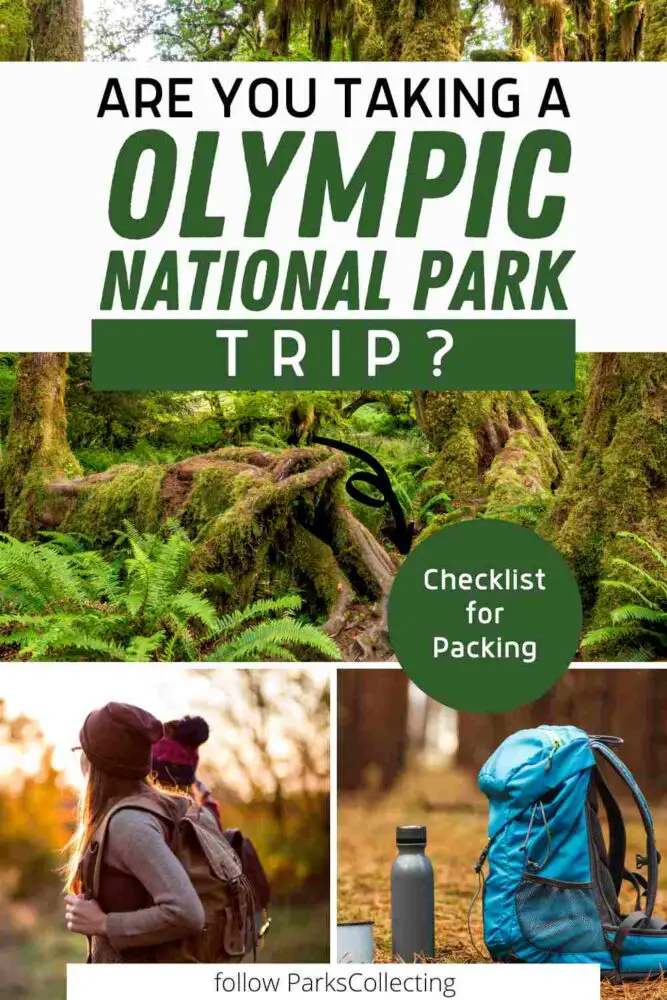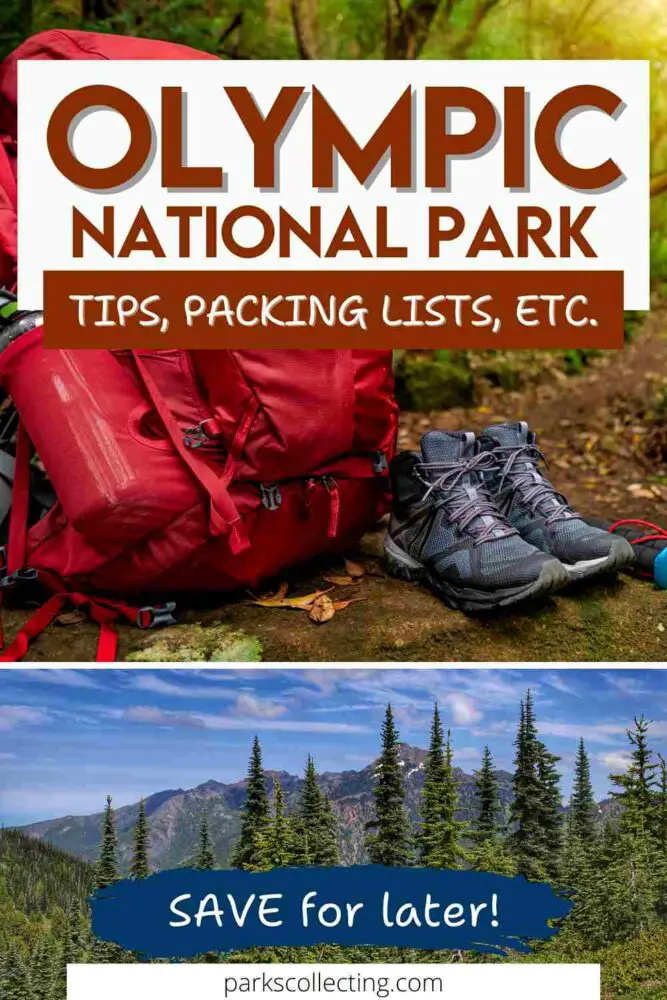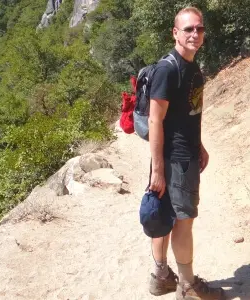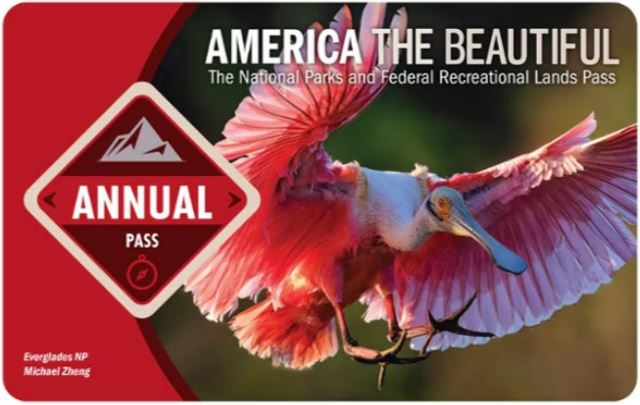Stressing about what to pack for Olympic National Park?
You’re not the only one. With snowcapped mountains, mossy rainforests, and wild Pacific beaches, Olympic feels like three parks in one. The weather changes fast, trails can be muddy, and it’s easy to forget something you’ll wish you had once you’re there.
I know because I’ve been through it myself. After spending a lot of time in Olympic, I’ve figured out the sweet spot – the things you really do need, and the extras that only weigh you down.
This is for anyone planning their first Olympic adventure and wanting to feel confident, prepared, and comfortable – whether you’re hiking, road-tripping, or just exploring the park’s highlights.
Here’s a quick tip: a waterproof jacket is non-negotiable – rain can roll in any time, even in summer.
The rest of this packing list for Olympic National Park includes the exact essentials I recommend, so you can skip the guesswork and focus on enjoying one of the most beautiful national parks in the U.S.
Let’s get your bags packed and ready for Olympic.
There is a free downloadable Olympic National Park packing list with everything you need to go camping, plus an item-by-item breakdown of each item. I have mentioned when I think they are camping trip necessities and when they are recommended things to bring to camping that will make your vacation more comfortable. And, if you see something on the list that you don’t have, you can get it right here.
Table of Contents
ESSENTIALS
1. Small wallet
You are going to want to pack light when traveling to Olympic National Park because the amount of hiking there is to do here is mind-boggling. Having a small, light-weight, waterproof wallet can help bring down your pack weight, while also protecting your cards and cash.
2. Cash and Debit / Credit Card
Speaking of cards and cash, you are going to need to bring at least some cash with you in case of emergencies. A lot of this national park doesn’t get cell reception, which makes using credit and debit cards more difficult. However, some of the first-come, first-served campsites here let you book online with a debit or credit card so you are going to need to bring both.
3. Travel Insurance
You know what they say, hope for the best, prepare for the worst. You never plan to get medically evacuated when you break your leg jumping over a stream, but it can happen to the best of us. Travelex travel insurance will cover you for everything, from a canceled flight to a medical emergency
➡️ NEED TRAVEL INSURANCE? GET IT HERE
4. America The Beautiful Pass
The America the Beautiful Pass costs only $80 for a year of National Park entrance fees. It usually costs around $35 per car to enter a National Park so if you visit just three Parks this year, this pass will pay for itself.
➡️ WANT AN AMERICA THE BEAUTIFUL PASS? GET IT HERE
5. Park Map(s)
A park map is a great way to get the lay of the land before you even step foot in the Park. Olympic National Park is over a million acres and, like I said, has spotty cell coverage at best. This map has both road and trail maps so you can travel with confidence around the park.
6. Tide Chart
Olympic National Park has some of the best tide pools in the world that you are not going to want to miss. A tide chart will tell you when low tide is so you know when the tide pools will be exposed and when the best time to visit them will be.
➡️ CHECK THE TIDES AROUND OLYMPIC NATIONAL PARK HERE
7. Itinerary
You are going to also need an itinerary to make sure you hit all of the most popular spots.
➡️ I’ve created detailed itineraries for Olympic National Park (check out 1, 2, 3 and 4-day options here)
CLOTHING
8. Waterproof Hiking Shoes/ Boots
The Hoh Rain Forest is the rainiest place in this National Park that gets over 12 feet of rain each year! This means that you are going to need a really good pair of hiking boots to protect your feet. Make sure that the boots that you choose are waterproof and have great traction so that you and your feet are safe on the trails.
9. Rubber boots or Water Shoes or Sandals
If you plan on climbing around the tide pools or going for a dip in any of the over waterfalls at this park that allow swimming, you are going to need something to protect your feet and keep you from slipping. A simple pair of water shoes, rubber boots, or sandals should do the trick when it comes to the slippery rocks and sharp coral.
10. Hiking pants
For hiking pants, I prefer something lightweight and breathable. This way, you don’t have to worry about your legs getting all sweaty, which will end with you chafing. Lightweight hiking pants also dry quicker than jeans or other pants, which makes them the perfect option if you get caught out in the rain.
11. Long sleeve tops
Layers are going to be very important when packing for Olympic National Park. A moisture-wicking long sleeve top is the perfect base layer that will keep you dry and warm at the same time.
12. Wool Hiking Socks
To go with your hiking boots, you will want a pair of wool hiking socks. Wool socks are the best option for blister prevention, moisture wicking, and keeping your feet warm so that you can do all the hiking your heart desires.
13. Fleece Jacket
Adding to our layers, you are going to want a fleece jacket. This will keep you nice and warm and should go over your base layer. That way, if you are getting too hot you can take it off, or if you are cold you can add more jackets.
14. Rain Jacket
In my opinion, this is the most important piece of gear for you to bring. There is nothing worse than a jacket that just absorbs the rain and makes you soaking wet and freezing. If you don’t have a good rain jacket, then you need to invest in one for your trip to Olympic National Park.
15. Gloves
Your hands are a part of your body that makes you lose the most amount of body heat when they’re exposed. A pair of waterproof, insulated gloves will keep you safe from hypothermia and frostbite because even in the summer months it can still reach freezing temperatures during the night.
16. Quick-dry underwear
Last piece of clothing that you will need is quick-dry underwear. We all know that on long hikes, it can get pretty damp down there. Quick-drying underwear will make it so there is less chafing and so that you can bring fewer pairs of underwear with you on long treks.
ACCESSORIES
17. Toiletries Bag
Organizing all of your toiletries for your trip can be difficult. You can put them all in different plastic bags, but then they get all mixed up and when the bag eventually breaks, everything in your suitcase is ruined. That’s why a designated, padded, toiletries bag with a zipper is necessary when you’re packing.
18. Sun Hat
Although Olympic National Park is famous for its rainforest, it actually doesn’t rain that much in summer – and when the sun comes out, you can definitely get sunburned. The reason for this is that the weather is still going to be cold, so you would think that you don’t need to protect your skin. However, the sun is going to be just as strong as it would be on a hot day.
19. Sunglasses
I never leave my house without my sunglasses, so packing them for a trip is a no-brainer. Make sure that you pack sunglasses that are 100% UV protected and have polarized lenses, which allow you to see things in the water that can’t be seen with the naked eye.
20. Warm Hat
Your head and ears are another place where you lose a lot of body heat. Make sure that they are protected from the cold by using a warm hat.
21. Packing Cubes
Packing Cubes are a great way to organize your suitcase and make it so you can easily find things without having to dump out your whole bag. They also do a great job of protecting more delicate clothes like silk or knitted items.
22. Hair Ties (if needed)
Hiking with your hair in your face is not a fun feeling. Bring some hair ties so that this doesn’t happen to you.
TRAVEL TECH AND ELECTRONICS
23. Camera (extra battery) and film/memory card
I use my phone a lot to take photos, but sometimes a phone camera just won’t cut it. A lot my favorite pictures that I’ve taken have been on a camera. Cameras usually have more megapixels and a bigger sensor than a phone, which makes them the more quality option. I especially love my GoPro 12 for taking action shots and in the tidepools.
Bring extra batteries and memory cards too so that you can capture every moment of your trip.
24. Binoculars
If you are an animal lover, then you’ll need binoculars at Olympic National Park. Whether you’re a birdwatcher or looking for gray whales, they will definitely come in handy.
25. Waterproof Phone Case
The rainforests in Olympic National Park are some of the wettest spots in the US. The only way to keep your phone safe is by getting a waterproof phone case. Sure it makes your phone a little harder to get to, but when it starts raining (which it will) you will be grateful you brought one. It’s also great for taking underwater photos at the tide pools!
26. Power Bank
A power bank makes it so you can hike and not have to worry about finding a place to charge your phone. Most power banks will charge your phone at least 1.5 times and with almost every gadget being rechargeable these days, a portable charger is almost necessary on any trip you take.
27. Extra Cord or Chargers
Like I was saying, everything is rechargeable which means a lot of cords and chargers. There are lots of products that have 3 or more connectors on a single cord which makes it so you don’t even need to think if you’ve gathered every cord for all your different electronics.
OUTDOOR GEAR
28. Day Pack
With over 600 miles of trails in Olympic National Park, a day pack will make hiking a breeze. Just toss in a water bottle, some snacks, and a map and you’ll be good to go.
29. Day Pack Rain Cover
A rain cover for your day pack will protect and keep your things dry on rainy hikes. There are lots of universal rain covers that will fit almost any backpack which allows you to hike stress-free knowing that the things in your bag are safe.
30. Water Bottle
Hydroflask is my favorite brand of water bottle. It does a great job at keeping drinks hot or cold for hours and is durable enough that you will never have to worry about it breaking. Remember, that even in rainy weather you are going to need to hydrate.
31. First Aid Kit
As I said, hope for the best, plan for the worst. A first aid kit will help you with everything from blisters to cuts. Everyone always hopes that nothing bad is going to happen on a long hike but come day 3 or 4 of hiking, the first aid kit will almost always come in handy.
32. Retractable Hiking Poles
Olympic National Park has some of the steepest trails you’ll ever see. On the uphills, you can use your arms to help by using hiking poles. Then on the downhills hiking poles take some of the load off of your knees. Retractable hiking poles make them easy to store when you are not using them.
33. Gaiters
Gaiters are an amazing way to keep sand, dirt, and rocks out of your shoes on runs and hikes. In this National Park, I would recommend getting a pair of waterproof gaiters so that water stays out of your shoes as well.
34. Paracord Bracelet
A paracord bracelet is the ultimate survival kit that fits on your wrist. They usually come with a fire starter, compass, whistle, and up to 12 feet of paracord. Hiking with one of these will put you at ease in case things take a turn for the worst.
35. Sunscreen
Even in the cloudiest weather, the sun can still shine through. I would recommend putting on sunscreen every morning you are hiking to protect your skin and prevent blistering. Also, if you are doing any skiing or snowshoeing in the winter and the sun is out, make sure to put on your sunscreen because the snow acts as a magnifying glass for the sun and will roast you.
36. Bug Spray
During the summer months, beware of horse flies, deer flies, black flies, and mosquitoes. All of these insects will bite you and leave you covered in bumps. Some sections of Olympic National Park cab get very buggy in summer!
37. Snacks
There are so many hikes and things to do in this national park that you will never want to stop exploring. That is why you should bring some snacks with you wherever you go. You never know how long you are going to be out.
38. Headlamp
Olympic National Park is pretty high up in the northern hemisphere which means long days in the summer and long nights in the winter. A headlamp is great to have on any camping trip and will make your cooking and setting up the tent a lot easier.
39. Picnic Basket
There are so many beautiful fields and views in this park that at least once you should have a picnic. A picnic basket is perfect for a romantic date in the outdoors or feeding hungry kids when you get to the lookout point you hiked to.
40. Collapsible cooler
You will never regret bringing a collapsible cooler with you on a trip. It only makes life easier and your food and drinks taste better.
CAMPING GEAR
➡️ See my Tent Camping Packing List if you’ll be camping.
➡️ See Beach Camping Packing List if you’ll be beach camping (Olympic is a GREAT place for beach camping)!
Get your Olympic National Park packing checklist printable
Have a great time on your Olympic National Park trip!
Knowing what to pack for Olympic National Park is a very important step in planning your trip, and I hope this packing list helped.
However, as I’m sure you’re very aware, this is just one thing of many to decide. You also need to make a actual plan for your trip.
In fact, the thing that most people ask me about is how to create an actual itinerary that makes sense. They worry about how to minimize the crowds, what to do – and when – and how to coordinate it all.
To help take away the overwhelm of planning a trip to Olympic National Park, I’ve created several super detailed itineraries.
Without them, people often feel stressed about planning their trip. With them, they have the confidence of getting all the info they need in one spot. Plus, there’s flexibility built in, so they can easily adapt them to their own interests and activity levels.
There are 1-, 2-, 3-, and 4- day options for Olympic National Park: all with detailed hour-by-hour schedules, including alternatives for different activity and fitness levels, plus trail maps and descriptions, driving instructions, important information, essential tips, and everything else you need to make the most of your time in Olympic National Park.
More Planning Resources for Olympic National Park
⭐ Olympic National Park Guide
⭐ Olympic National Park Itinerary
⭐ 12 Tips for Visiting Olympic National Park
⭐ 7 Mistakes to Avoid in Olympic
⭐ How Many Days in Olympic National Park?
⭐ Packing List for Olympic National Park
⭐ Best Things to Do in Olympic National Park
⭐ Best Views In Olympic National Park
⭐ Best Waterfalls in Olympic National Park
⭐ Best Hikes in Olympic National Park
⭐ Visiting Hurricane Ridge: Complete Guide
⭐ Best Hurricane Ridge Hikes
🔹 Hurricane Hill Trail Guide
🔹 Cirque Rim Trail Guide
🔹 High Ridge Trail to Sunrise Point Trail Guide
⭐ Best Hikes Near Lake Crescent
🔹 Marymere Falls Trail Guide
⭐ Best Sol Duc Hikes
🔹 Sol Duc Falls Trail Guide
🔹 Ancient Groves Nature Trail Guide
🔹 Sol Duc Salmon Cascades
⭐ Best Hoh Rainforest Hikes
🔹 Hall of Mosses Trail Guide
🔹 The Hoh River Trail Guide
⭐ Best Olympic National Park Beaches
⭐ Best Tide Pools in Olympic National Park
🔹 Rialto Beach Guide
🔹 Kalaloch Beach 4 Guide
🔹 Third Beach Guide
🔹 Second Beach Guide
🔹 The Tree Of Life
⭐ Best Lake Quinault Hikes
🔹 Maple Glade & Kestner Homestead Trails
⭐ Lake Quinault Loop Drive: A Complete Guide
⭐ How To Get to Olympic National Park
⭐ All The Airports Near Olympic National Park
⭐ The Closest Airport to Olympic National Park
⭐ When is The Best Time To Visit Olympic National Park?
⭐ What To Expect Throughout the Year
⭐ 10 Fun Facts About Olympic National Park
Do you have any other thing to include on your Olympic National Park packing list that’s not here? Join my private Facebook group National Parks Collectors and comment and let me know (you can also pick up extra planning tips, share your photos and stories with other national park lovers and more).
Note that this packing list focuses on Olympic National Park. I have additional packing lists for other specialty aspects of a vacation, so check them too if your vacation …
🥾 will involve hiking (day hikes packing list)
👣 is for a beginner hiker (hiking gear for beginner hikers)
❄️ is in winter (winter trips packing packing list)
🏔️ will involve hiking in winter (winter hikes packing list)
🚗 includes a road trip (road trip packing list)
🌲 is to a national park (national parks packing list)
⛺ also has you camping (tent camping packing list)
🏖️ includes beach camping (beach camping packing list)
🔥 also has you staying in a cabin (cabin packing list)
If you found this Olympic National Park packing list helpful, Pin It to your Olympic National Park board for when you need it!


💡 Are you just starting to think about taking a national parks trip? Get Inspiration
‼️ Are you looking for helpful tips for visiting US national parks? Read articles that share useful tips on a range of national-park related issues
💻 Are you starting to plan a trip to Olympic National Park? Read my Guide to Olympic National Park
📋 Do you want a ready-made super detailed plan for your trip to Olympic? Get a detailed 1 – 4-day Olympic National Park Itinerary
💲 Are you ready to book your trip? Use these Planning and Booking Resources
📖 Do you want to read a book about US national parks? Check out my Recommended Reading Lists
About the Author

James Ian is a national park, camping and hiking expert.
He has dedicated his life to travel, visiting more than 80 countries, all 7 continents and most of the national parks in the United States. With over 35 years experience in the travel industry, James has worked on cruise ships, at resorts and hotels, and as a travel planner who’s helped hundreds of people plan successful trips to US national parks.
Based on his experience visiting our national parks multiple times, in-depth research and expertise as a travel planner, James has published detailed itineraries for many of the major national parks in the US. These itineraries, as well as in-depth park guides, and other resources will help you have your own incredible trip to US national parks without stress and hassle.
As a national park expert, James has contributed to many publications, including USA Today, Newsweek, Time Business News, Savoteur, Best Trip, and Wired.
I’m a member of the Amazon Services LLC Associates Program. As an Amazon Associate I earn from qualifying purchases.










































